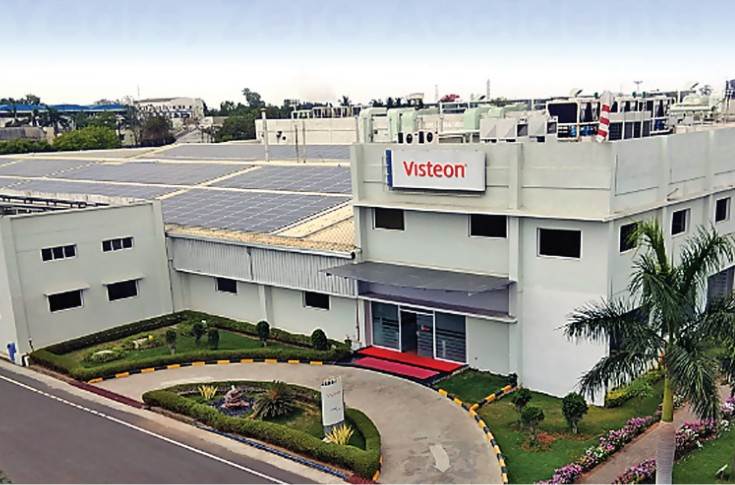Pony.ai’s robot taxis are now operating in taxi mode in Guangzhou, China. In Chinese Guangzhou you can in future a robot taxi from Pony.ai Reserve. The company submitted the necessary documentation and passed the tests to implement the pilot project. [embedded content] At the same time, PonyPilot+ also starts as a commercial service. The robot… Continue reading Pony.ai receives commercial operating license
Tag: Mobility
@Ford: Ford Outperforms Industry in June – Sales up 31% On Strong F-Series and SUV Mix; F-150 Lightning Best-selling Electric Truck in June As EV Vehicle Sales Jump 77%; Lincoln SUV Sales Up 44%
About Ford Motor Company Ford Motor Company (NYSE: F) is a global company based in Dearborn, Michigan, that is committed to helping build a better world, where every person is free to move and pursue their dreams. The company’s Ford+ plan for growth and value creation combines existing strengths, new capabilities and always-on relationships with… Continue reading @Ford: Ford Outperforms Industry in June – Sales up 31% On Strong F-Series and SUV Mix; F-150 Lightning Best-selling Electric Truck in June As EV Vehicle Sales Jump 77%; Lincoln SUV Sales Up 44%
Hyundai to reveal radical new N sports car on 15 July
Hyundai’s N performance division will reveal a new model on 15 July as part of the brand’s annual N day. The mysterious new model has been previewed on social media ahead of its world premiere, wrapped in cloth in a dimly lit warehouse. Only its most distinctive body features were on display. A large spoiler… Continue reading Hyundai to reveal radical new N sports car on 15 July
Automakers Add Biometrics to Make Sure Motorists are Healthy, Happy
connected car, artificial intelligence, sensors, health A growing number of automotive suppliers are developing technologies that use a variety of sensors and software to monitor the well-being of drivers and passengers and take proactive measures to help them if they are in distress. In one recent example, global automotive supplier Hyundai Mobis announced June 23… Continue reading Automakers Add Biometrics to Make Sure Motorists are Healthy, Happy
German Handelsblatt: Mobility service: Volkswagen completes Europcar takeover: Car sharing should finally become profitable004631
VW setzt auf neue Mobilitätsdienste und Europcar Europcar am Flughafen Merignac bei Bordeaux: Mit der Übernahme des Autovermieters will Volkswagen Carsharing profitabel machen. (Foto: Reuters) Der Volkswagen-Konzern startet einen neuen Versuch, das für die gesamte Autobranche wenig rentable Carsharing-Geschäft auf eine finanziell tragfähige Basis zu stellen. Die Schlüsselrolle spielt dabei die jetzt abgeschlossene Übernahme des Autovermieters… Continue reading German Handelsblatt: Mobility service: Volkswagen completes Europcar takeover: Car sharing should finally become profitable004631
‘We are working on 48-inch wide displays’
Big, bigger biggest…..yes that’s literally the transformation that the car infotainment screen is going through. If there is one aspect of a car’s interior that calls for attention, it is the display screen. Pretty much the way that cell phones evolved, you can see a distinct trend in the way these screens are expanding their… Continue reading ‘We are working on 48-inch wide displays’
NIO, XPeng (XPEV), Li Auto (LI) Issue June, Q2 Delivery Updates
The three major China-based smart electric vehicle (EV) companies, NIO Inc. NIO, Li Auto LI and XPeng Inc. XPEV, recently announced their respective delivery updates for June and second-quarter 2022. NIO delivered 12,961 vehicles in June 2022, marking an increase of 60.3% year over year. The deliveries consisted of 1,684 ES8s, 5,100 ES6s, 1,828 EC6s,… Continue reading NIO, XPeng (XPEV), Li Auto (LI) Issue June, Q2 Delivery Updates
Electric Car Market Size to Reach USD 597340 Million by 2028 with a CAGR of 25.3% | Valuates Reports
BANGALORE, India, July 5, 2022 /PRNewswire/ — The Global Electric Car Market is Segmented by Type (PHEV, BEV), by Application (Home Use, Commercial Use): Opportunity Analysis and Industry Forecast, 2022–2028. It is published in Valuates Reports under the Autos & Vehicles Category. Due to the COVID-19 pandemic, the global Electric Car market size is estimated to be worth USD… Continue reading Electric Car Market Size to Reach USD 597340 Million by 2028 with a CAGR of 25.3% | Valuates Reports
The City of Jamestown upgrades parking and mobility management with Passport
Jamestown continues to modernize its operations with the launch of Passport’s mobile payment application for parking JAMESTOWN, N.Y., July 5, 2022 /PRNewswire/ — The City of Jamestown, N.Y. is introducing a contactless payment option for parking with the launch of the Passport Parking application. The app is powered by Passport, a leading transportation software and payments… Continue reading The City of Jamestown upgrades parking and mobility management with Passport
Hertz Global Holdings, Inc. to Announce Second Quarter 2022 Financial Results on July 28
ESTERO, Fla., July 5, 2022 /PRNewswire/ — Hertz Global Holdings, Inc. (NASDAQ: HTZ) (the “Company”) announced today that it plans to report its second quarter 2022 financial results at approximately 7:30 a.m. ET on Thursday, July 28, 2022 followed by an earnings call at 8:30 a.m. ET. A live webcast of the call will be available on the… Continue reading Hertz Global Holdings, Inc. to Announce Second Quarter 2022 Financial Results on July 28
